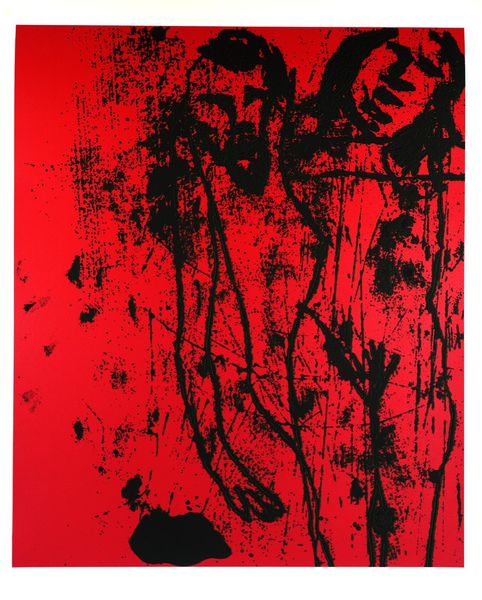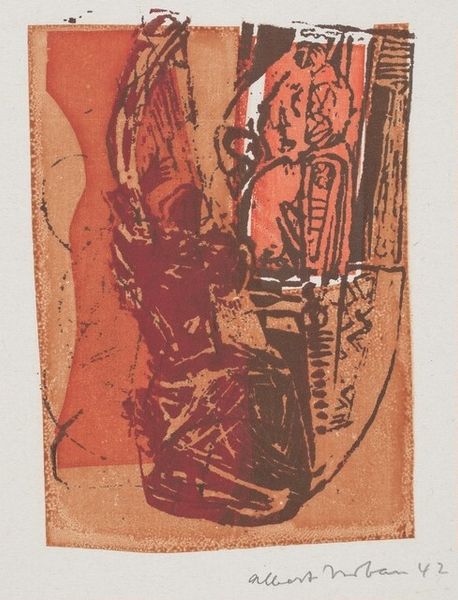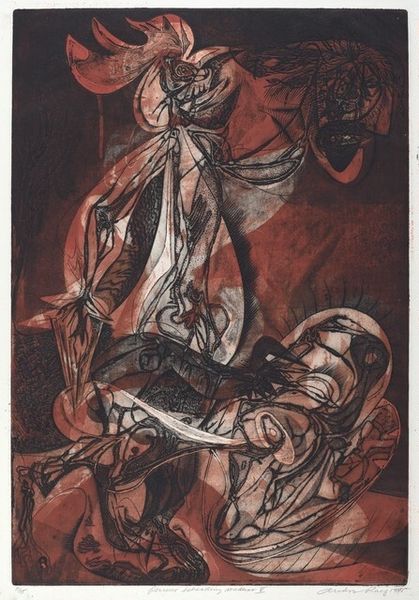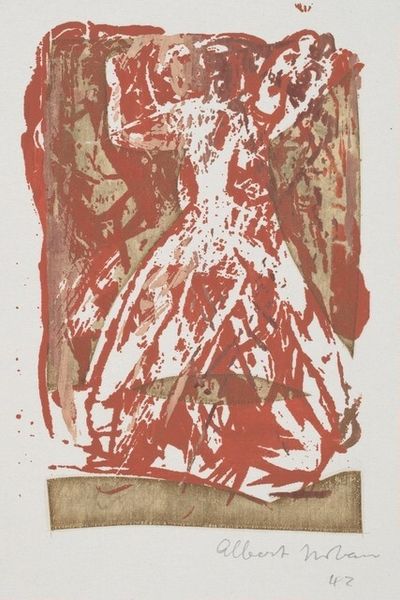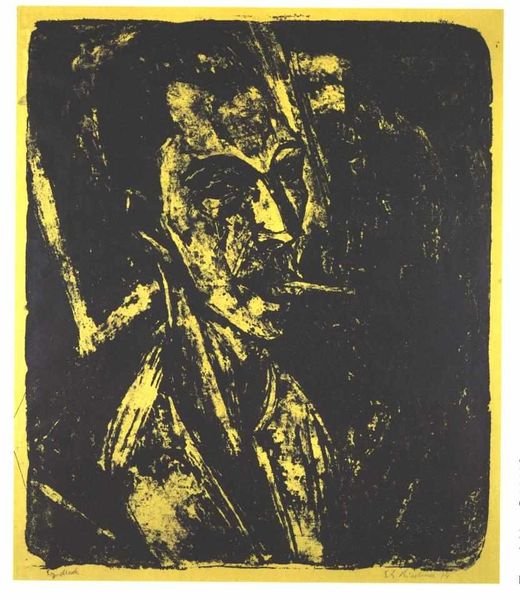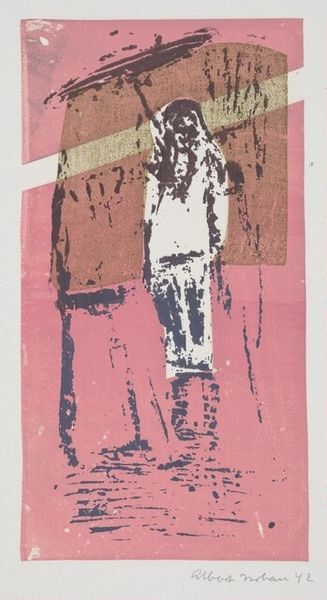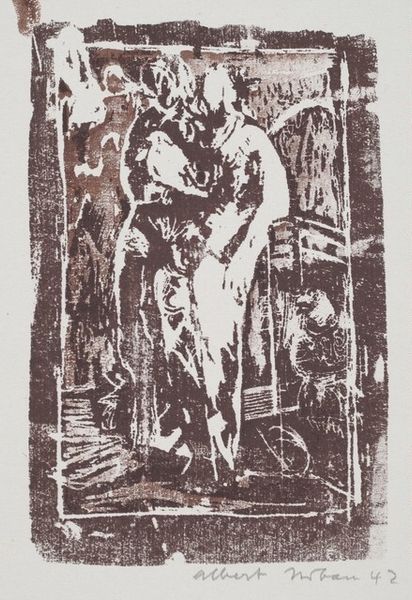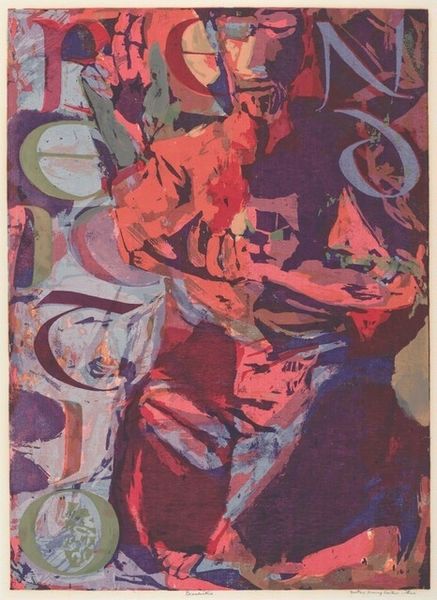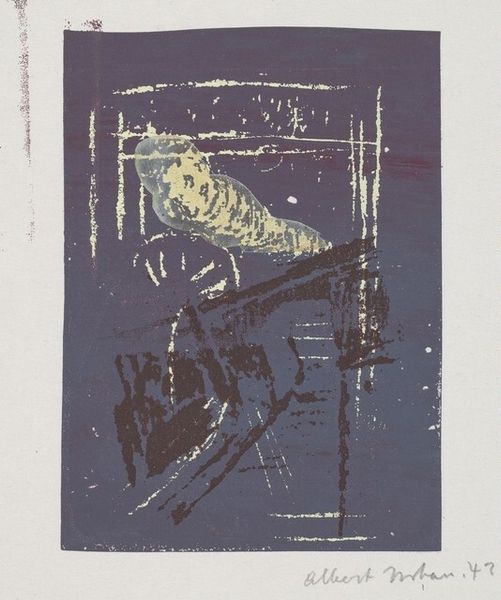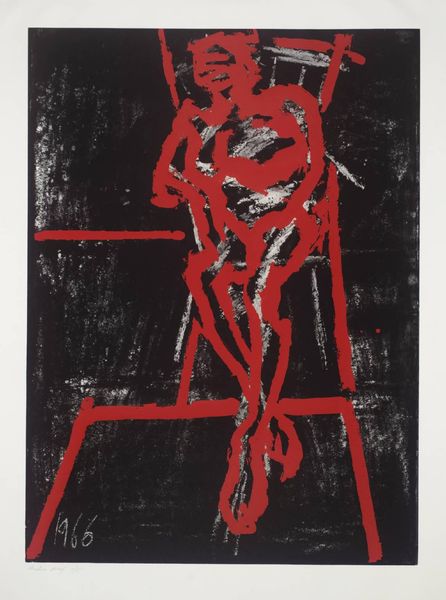
print, woodcut
#
portrait
# print
#
figuration
#
woodcut
Dimensions: image: 30.3 x 24.6 cm (11 15/16 x 9 11/16 in.) sheet: 45.1 x 30.6 cm (17 3/4 x 12 1/16 in.)
Copyright: National Gallery of Art: CC0 1.0
Editor: Here we have Milton Avery's "Dancer," a 1954 woodcut print. I'm struck by how the bold reds and blacks, along with the rough texture, convey a feeling of both energy and a kind of raw emotion. What do you see in this piece, especially in terms of symbolic meaning? Curator: It's interesting you pick up on the emotion, because that's precisely where the power of symbols lies. The dancer, archetypally, represents movement, transformation, and a connection to something beyond the mundane. Avery, in using this rather primitive woodcut style, evokes something ancient, ritualistic almost. Look at the dancer’s pose – does it remind you of any specific cultural dances or iconic images? Editor: Not really anything specific comes to mind immediately, although there’s a slight hint of flamenco perhaps? Curator: Maybe! It is more important to note the universality. The abstraction helps here. Rather than representing a particular dance, Avery distills the essence of dance itself. The harsh contrast, like shadow and light, shows transformation, perhaps a Jungian confrontation with the unconscious? Dance becomes a powerful symbol for understanding our human impulses toward change and self-expression. How does knowing this affect your initial perception? Editor: It deepens it. I saw the emotion and the energy before, but understanding the potential for deeper symbolism relating to transformation, it gives a more considered resonance. I now feel as if I’m looking at more than just a dancer, but something more fundamental about human experience. Curator: Precisely. Avery's piece invites us to see familiar images in a new symbolic light.
Comments
No comments
Be the first to comment and join the conversation on the ultimate creative platform.
